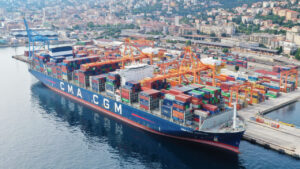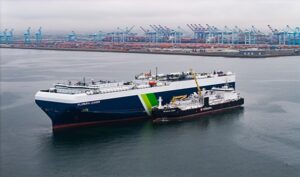The rollout of microgrids to outermost and island ports could be a key unlocking force behind increasing electrical power usage in maritime.
A microgrid is a local energy grid capable of operating autonomously from a traditional regional or national grid.
Microgrids have seen a surge in interest in the United States at the Port of San Diego and Port of Long Beach, but are still in fledgling usage in ports.
The microgrid’s independence away from a central power grid means that ports and terminals can connect to a more reliable power source and can be renewably-fuelled through hydrogen or biofuel sources.
Its greater reliability could help ports invest further into green zero-emission electrical operations: including cargo handling equipment like RTG cranes at the Port of Long Beach; onshore power (OPS); or electrical charging points for vehicles using a yard.
One area where microgrids can make a particular impact is in remote and island ports, says Isabelle Ryckbost, Secretary General, the European Sea Ports Organisation (ESPO).
In an interview with PTI, Ryckbost said that challenges remain on microgrids in ports and maritime.
“[There is a] need for coordination with other stakeholders, also a need for a favourable legislative framework” Ryckbost said.
“[The] challenge is how to power the grid (using offshore, generators) and what efficiency/capacity the microgrid would have. It could perhaps not serve high-voltage needs.”
However Ryckbost continued that ESPO would recommend greater investment in microgrid technologies to reduce the power-intensive demands on port community grids such as through onshore power.
“Sufficient grid capacity is essential for OPS,” she said. “The needs are often impossible to meet with the in-harbour grid, and sometimes there is not always sufficient additional grid support available in the surrounding community. This is especially an issue on islands and in outermost regions.”
Urban nodes generally have a high energy demand, with OPS adding additional energy needs, Ryckbost said. She added that this “will only increase” with the further electrification of industrial clusters in port areas.
“Accordingly, sufficient grid capacity must be available on the European level as well as on the local level, where grids providing clean or low-emission energy is a precondition for real CO2 reductions over the lifecycle.
“The seasonal nature of certain traffic (in particular maritime passenger transport) also makes it difficult to prepare a suitable degree of energy storage in ports,” Ryckbost noted.
The UK ports industry is the latest to expand further into low and zero-emission operations following the launch of a new sustainability funding competition.








